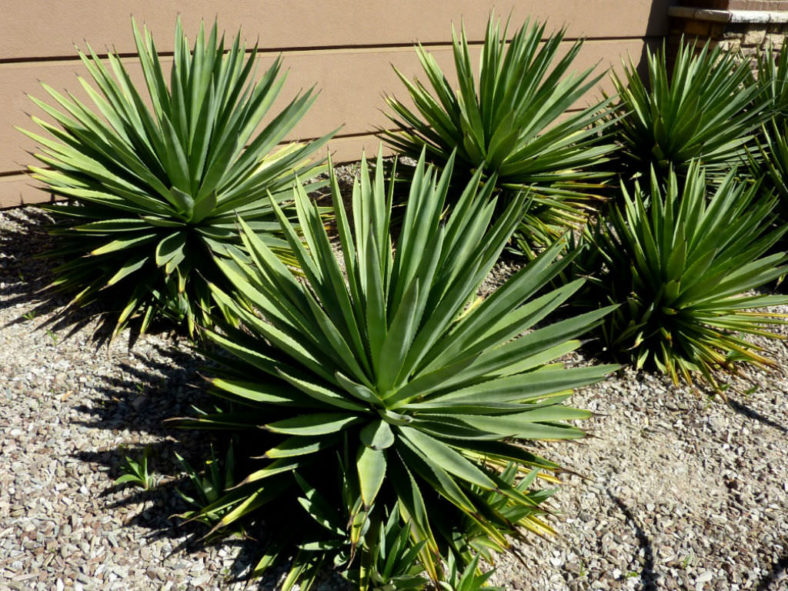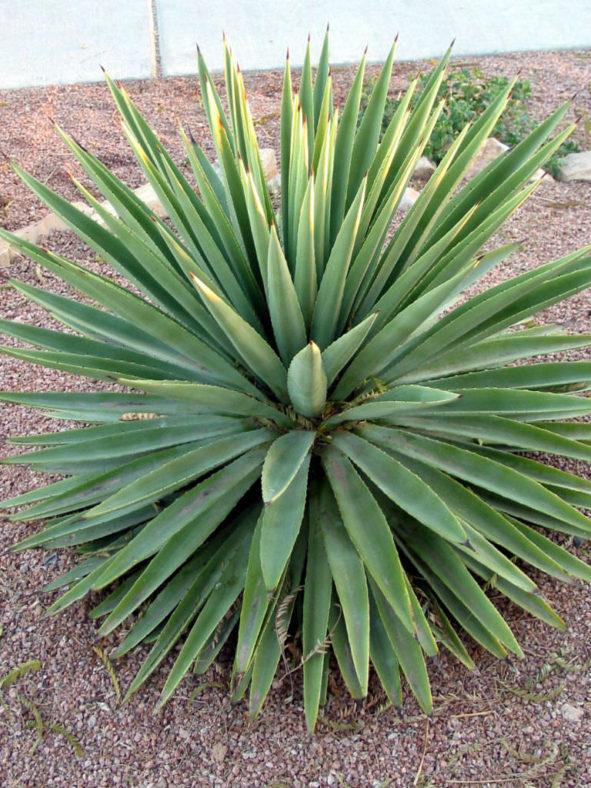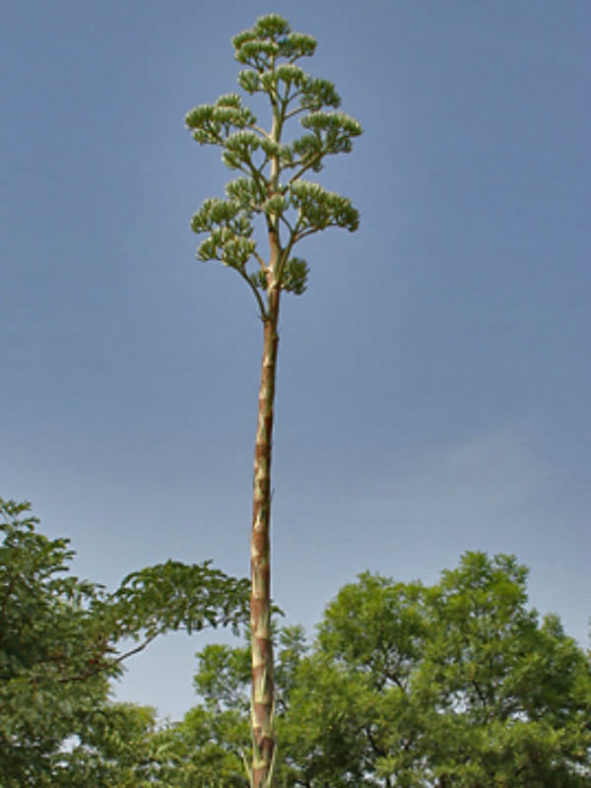Scientific Name
Agave angustifolia Haw.
Common Name(s)
Caribbean Agave, Century Plant, Mescal Agave, Maguey, Narrow-Leaved Century Plant
Synonym(s)
Agave angustifolia subsp. angustifolia
Scientific Classification
Family: Asparagaceae
Subfamily: Agavoideae
Genus: Agave
Etymology
The specific epithet "angustifolia" (pronounced "an-gus-tee-FOH-lee-uh") means "narrow-leaved" and refers to the narrow, lance-shaped leaves of this species.
Origin
Agave angustifolia is native to Mexico and Central America.
Description
Agave angustifolia is a succulent plant that forms large, stemless or short-stemmed rosettes of stiff, fleshy leaves that vary in color from greyish-green to bluish-grey. The rosettes can grow up to 3.3 feet (1 m) tall and 5 feet (1.5 m) in diameter. The leaves have margins armed with small, brown, prickly teeth and a pointed tip with a dark-brown spine. They are lance-shaped and can measure up to 32 inches (80 cm) in length and 4 inches (10 cm) in width.
After ten years or more in spring, the rosette blooms and dies after flowering. The flowers are greenish-yellow and appear clustered on a stem that can grow up to 16.5 feet (5 m) tall. The seed capsules are dark brown or blackish and can reach a length of 2 inches (5 cm) and a width of 1.2 inches (3 cm). Plantlets are often also produced in clusters near the tips of the flowering branches.
Cultivars

Hardiness
USDA hardiness zone 9a to 11b: from 20°F (-6.7°C) to 50°F (10°C).
How to Grow and Care
Agaves are not difficult plants to grow. They are slow-growing and dramatic and will even thrive on a bit of neglect. If you are the type of person who likes to fuss with houseplants and water a lot, Agave is probably not the plant for you. On the other hand, if you are the type of person who likes to set it and forget it, and you have a sunny window, Agave might be the way to go. Be aware that some large varieties will eventually outgrow your room (unless you have a large greenhouse), and Agave can be aggressive. They have irritating sap and sometimes very sharp thorns that can injure small children and even pets.
Generally, Agaves do not require repotting every year. Most species commonly found in cultivation grow slowly and take a long time to outgrow their pot. It is also best to handle your Agave as little as possible since they do not like to be disturbed. When you repot, refresh the spent soil with a new potting mix and ensure the plant is firmly anchored in its pot. However, be careful not to pot the Agave too deeply, as this can encourage stem rot during the growing season.
See more at How to Grow and Care for Agave.
Links
- Back to genus Agave
- Succupedia: Browse succulents by Scientific Name, Common Name, Genus, Family, USDA Hardiness Zone, Origin, or cacti by Genus
Photo Gallery
Click on a photo to see a larger version.

